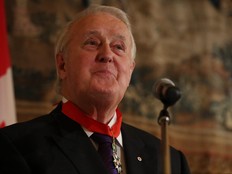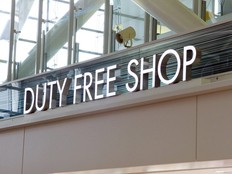CHARLEBOIS: Elbows up, food prices up — until feds quietly backed down
The tone from Ottawa has shifted. And so should the narrative from grocers.

Article content
Bloomberg reported on Thursday that Canada’s food industry is now facing fewer counter-tariffs when importing products from the United States, except for orange juice, coffee and alcohol. For many, this came as a surprise. According to the federal government’s own records, on April 16 — in the middle of the election campaign — Mark Carney, not yet elected, opted to eliminate most of the retaliatory tariffs imposed by his predecessor, Justin Trudeau.
What’s more, the tariff remissions took effect on May 7, the day after Carney’s first official meeting as prime minister with President Donald Trump in Washington.
For the food industry and consumers alike, this is welcome news. The “dollar-for-dollar” tariff response that Trudeau championed was always a high-risk strategy against the world’s largest economy. These countermeasures may have fit a political narrative — propping up nationalism under slogans like “Elbows Up” — but they were economically counterproductive. Tariffs on key food ingredients and finished goods raised costs for Canadian importers, manufacturers, and ultimately consumers.
The contrast with the United States is stark. Despite imposing tariffs on food products from Canada, Mexico and other countries, the U.S. saw food inflation fall to 2% in April. In Canada, food inflation continues to rise. Our unemployment rate is ticking upward. The U.S. jobless rate remains stable. The policy gap — and its consequences — are increasingly visible.
Still, the Carney government’s lack of transparency is concerning. On April 10, during the election campaign, Carney briefly paused his campaign to convene a cabinet committee meeting on tariffs. At the time, the move raised eyebrows. Now, it’s clear he was preparing to walk back Ottawa’s retaliatory measures. Yet the public was not informed, at least not openly. No formal announcement was made during the campaign. Voters were left in the dark — arguably to avoid alienating the Elbows Up base.
Good policy? Yes. Transparent leadership? Not quite.
The other concern is how grocers, particularly Loblaw, are handling the tariff conversation. Loblaw has been warning Canadians of an imminent wave of price hikes due to tariffs, marking affected products with a “T” symbol in stores. According to Loblaw’s communications team, the symbol applies only to finished goods still subject to tariffs — items like pasta, rice, soap, and shampoo. About half of these items are food products.
They add that the government’s decision to lift tariffs on U.S. ingredients used in Canadian-made goods — like granola bars — is a relief. Fair enough. But it raises the question: Why continue to escalate public messaging about tariff-related inflation when the federal government is clearly moving away from that approach?
Yes, some retaliatory tariffs remain. But the list is shrinking, not growing. The tone from Ottawa has shifted. And so should the narrative from grocers.
RECOMMENDED VIDEO
In the U.S., Walmart is echoing similar concerns about price hikes, but that’s a different market with different dynamics. In Canada, where supply chains are already under strain and consumer confidence is fragile, this kind of messaging from industry leaders can easily veer into fear-mongering.
This entire episode — from opaque policymaking in Ottawa to corporate messaging campaigns — has been frustratingly opaque. But with a new government in place, there’s reason to believe that Canada’s approach to trade with the U.S. will be more strategic and less reactive.
What we need now is candour. The Trudeau era of performative economics is over. It’s time for both the Carney government and Canada’s grocers to level with Canadians. The politics of fear and slogans should give way to data, transparency, and a renewed focus on affordability and competitiveness.
— Dr. Sylvain Charlebois is the Director of the Agri-Food Analytics Lab at Dalhousie University and co-host of The Food Professor Podcast














Postmedia is committed to maintaining a lively but civil forum for discussion. Please keep comments relevant and respectful. Comments may take up to an hour to appear on the site. You will receive an email if there is a reply to your comment, an update to a thread you follow or if a user you follow comments. Visit our Community Guidelines for more information.